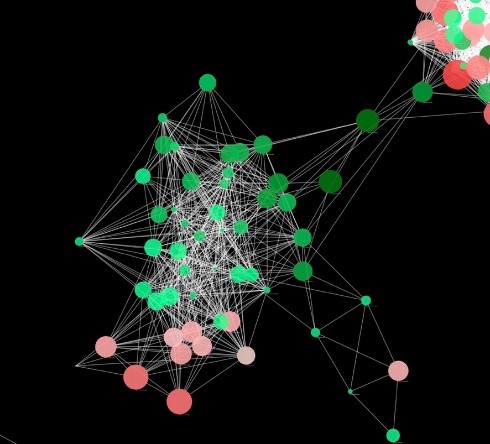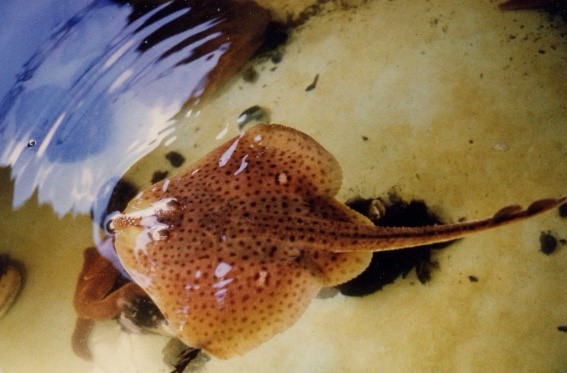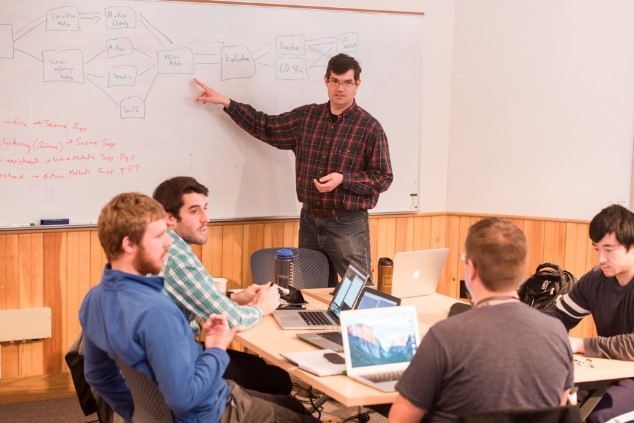As computers have advanced over the past few decades, researchers have been able to work with larger and more complex datasets than ever before. The science of using computers to investigate biological data is called bioinformatics, and it’s helping scientists make important discoveries, such as finding versions of genes that affect a person’s risk for developing various types of cancer. Many scientists believe that almost all biologists will use bioinformatics to some degree in the future.

However, bioinformatics isn’t always included in college biology programs, and many of today’s researchers received their training before bioinformatics was widely taught. To address these gaps, the bioinformatics cores of the five Northeast IDeA Networks of Biomedical Research Excellence (INBREs)—located in Maine, Rhode Island, Delaware, Vermont, and New Hampshire—have worked together to offer basic bioinformatics training to students and researchers. The collaboration started in 2009 with a project where researchers sequenced the genome of a fish called the little skate (Leucoraja erinacea) and used the data to develop trainings.
The Little Skate Genome-Sequencing Project
Scientists have used the ocean-dwelling little skate as a research organism to study how kidneys regulate the salt concentration in organisms’ bodies. After the bioinformatics cores began sequencing the little skate genome, they held four workshops, teaching about 50 students in total to analyze genetic information using the little skate data. Since students were working with a new dataset, they could do more than just repeat standard learning exercises—they could participate in ongoing research and contribute to scientists’ knowledge of the skate genome.

Dan Nasko, Ph.D., attended the inaugural little skate genome workshop in 2010 as an undergraduate majoring in pharmaceutical product development at West Chester University of Pennsylvania and working at a biotech company near the University of Delaware campus. It was his first hands-on experience with bioinformatics. “The workshop whetted my appetite for what I found interesting, what I found challenging, and what I thought I needed to learn more about,” Dr. Nasko says. “It was a really good springboard for meeting other people and developing a bioinformatics toolset.” He went on to earn a Ph.D. in bioinformatics and systems biology, and today works as a senior data scientist at a company that sequences the genomes of microbes for various industries.
Long-Term Impact
The little skate genome-sequencing project ended in 2014, but it inspired bioinformatics trainings that have reached many people since then. After the workshops, the cores developed curricula that use novel datasets to teach bioinformatics at the undergraduate and graduate levels, like the workshops did. Over several years, hundreds of students across the United States learned basic bioinformatics through these curricula. “Utilizing novel datasets in bioinformatics training, like what we did in the initial skate genome workshops, engages students by having them participate in the process of discovery,” said
Benjamin King, Ph.D., an assistant professor of bioinformatics at the University of Maine in Orono and co-director of the Maine INBRE Bioinformatics Core.

The project also led to the development of the weeklong applied bioinformatics course for scientists. Dr. King and colleagues at Dartmouth College in Hanover, New Hampshire, supported by the New Hampshire INBRE, created the training, and the bioinformatics cores presented it for the first time in 2012. They’ve offered it every year since. More than 200 scientists at all career stages have taken the course to date.
“This idea of providing collaborative research training was a direct output of the little skate genome-sequencing project,” says Dr. King. “And courses like the applied bioinformatics course have had an impact that I think is really quite fantastic.”
This work was supported by the Institutional Development Award (IDeA) program through NIGMS grants P20GM103423, P20GM103449, P20GM103446, P20GM103430, and P20GM103506.


Most informative article on a topic that needs more exposure not only to the research community but to informed lay-persons as well.